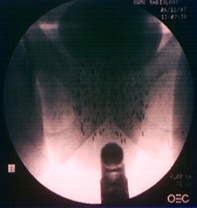Peer Reviewed
Feature Article Men’s health
Prostate cancer. Part 2. options in treatment
Abstract
Prostate cancer is a common malignancy in Australian men, and the choice of treatment for each individual will depend on many factors. All options must be discussed fully with the patient prior to making any therapeutic decisions.
Key Points
- Long term ongoing support is mandatory for the patient with prostate cancer, not only to monitor the progress of the disease but also to help manage side effects. Cancer support groups make a large contribution to patient care.
- Traditional radiotherapy has lacked accuracy and resulted in damage to adjacent organs. Side effects have been reduced and results improved by brachytherapy (with or without external radiotherapy), conformal radiotherapy and adjuvant hormone therapy. Addition of hormone therapy to radiotherapy has also improved long term outcomes.
- Combination of brachytherapy with external beam radiotherapy allows successful therapy for more advanced cancers that are often not amenable to surgical cure.
- Hormone therapy is the mainstay of treatment for advanced prostate cancer. Hormones may be given intermittently or continuously. Intermittent use is not as proven as continuous use, but it may be more suitable for patients who are likely to be taking hormone therapy for many years.
Purchase the PDF version of this article
Already a subscriber? Login here.

